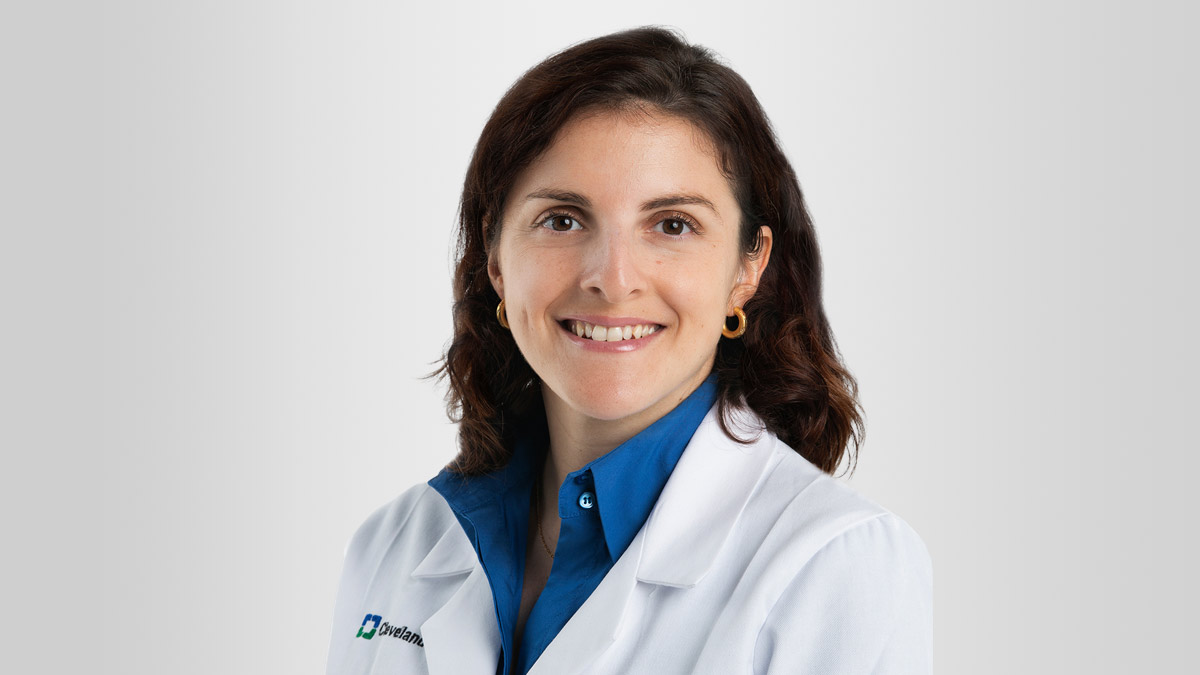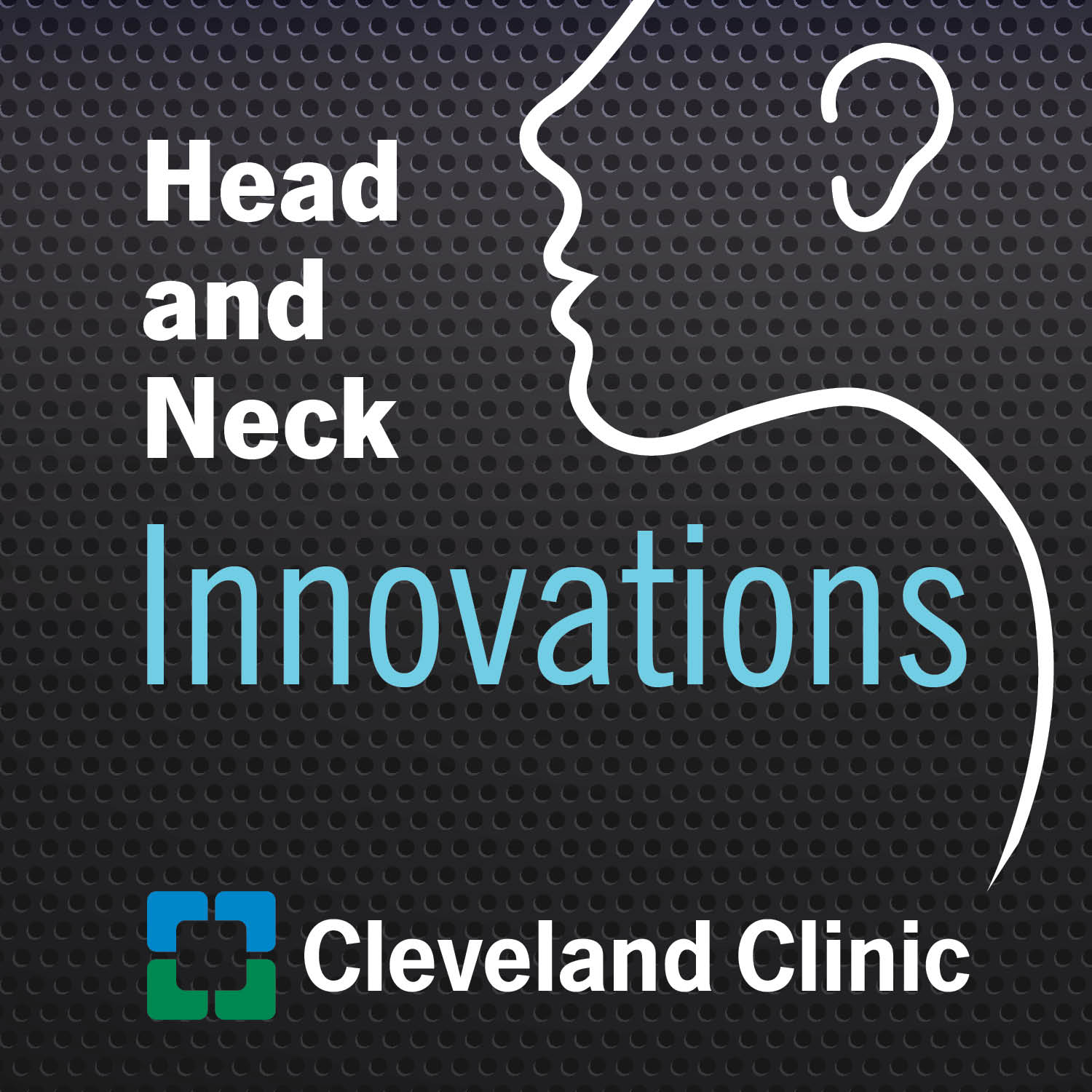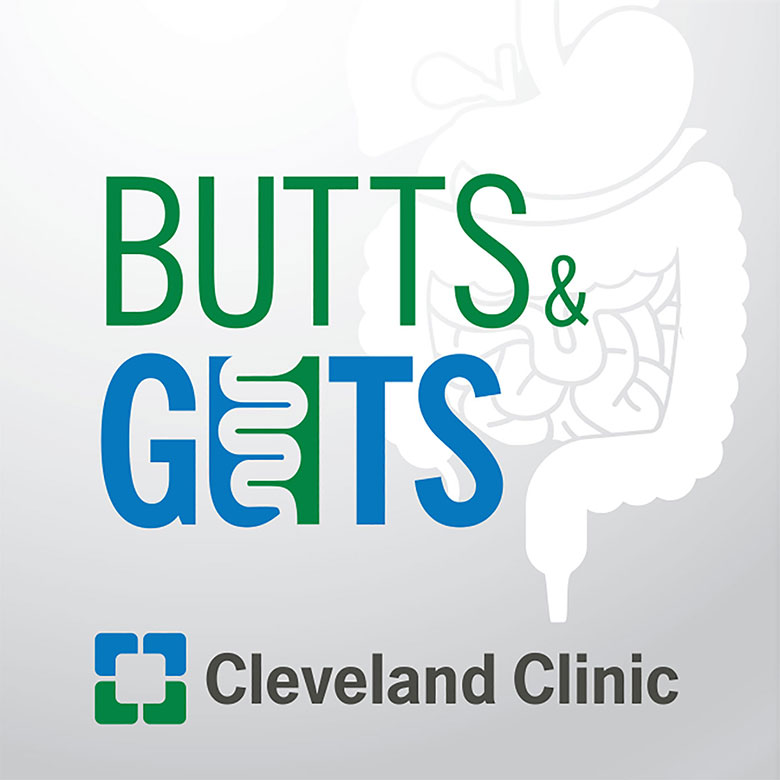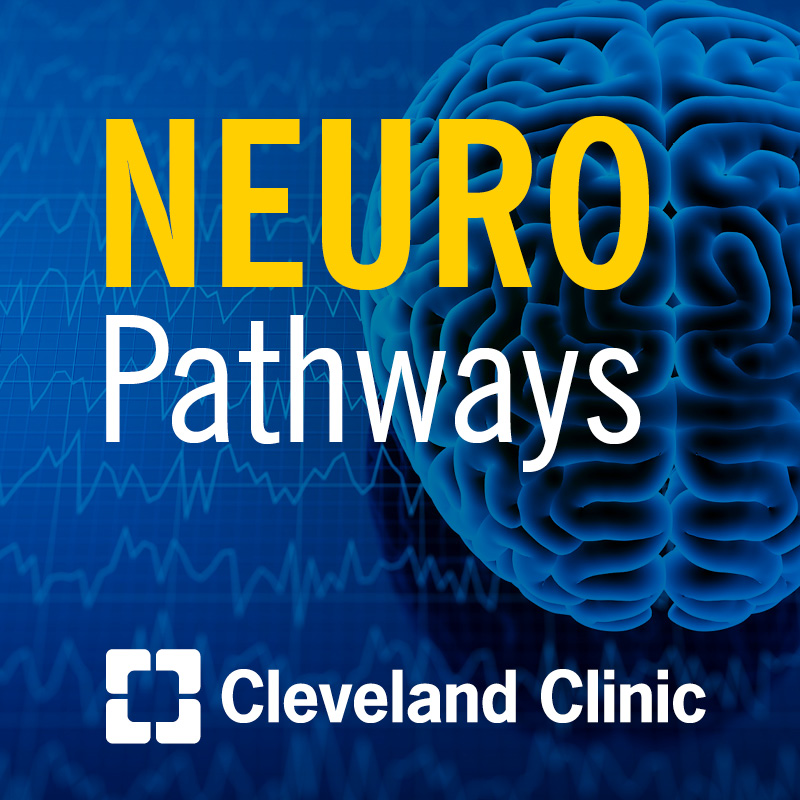Complex Cases, Collaborative Care: Pediatric Otolaryngology at Cleveland Clinic

Meet pediatric otolaryngologist Alisa Timashpolsky, who joins the podcast to discuss the latest in otology, rhinology and multidisciplinary care for complex ENT conditions found in children.
Subscribe: Apple Podcasts | Podcast Addict | Spotify | Buzzsprout
Complex Cases, Collaborative Care: Pediatric Otolaryngology at Cleveland Clinic
Podcast Transcript
Paul Bryson: Welcome to Head and Neck Innovations, a Cleveland Clinic podcast for medical professionals exploring the latest innovations, discoveries, and surgical advances in otolaryngology - head and neck surgery.
Thanks for joining us for another episode of Head and Neck Innovations. I'm your host, Paul Bryson, Director of the Cleveland Clinic Voice Center. You can follow me on X, formerly Twitter, @PaulCBryson, and you can get the latest updates from Cleveland Clinic Otolaryngology-Head and Neck Surgery by following @CleClinicHNI on X. That's @CleClinicHNI. You can also find us on LinkedIn at Cleveland Clinic Otolaryngology - Head and Neck Surgery, and Instagram at Cleveland Clinic Otolaryngology.
Today I'm joined by Alisa Timashpolsky, a pediatric otolaryngologist and one of our newer staff members in our head and neck department. Dr. Timashpolsky, welcome to Head and Neck Innovations.
Alisa Timashpolsky: Thanks so much for having me.
Paul Bryson: Well, it's great to have you as part of the team, and I know your practice is well underway and growing, but I was hoping you could start by having you share some background on yourself for our listeners, where you're from, where you trained, and what brought you to Cleveland Clinic.
Alisa Timashpolsky: Yeah, so I actually spent the majority of my childhood and training on the East Coast. I did my residency in New York City in SUNY Downstate, and then I went on to do fellowship in Philadelphia at the Children's Hospital of Philadelphia (CHOP). And during my time at CHOP, I had a couple of mentors who actually trained at the Cleveland Clinic. I really didn't know a lot about Ohio or the Cleveland Clinic, but during the interview process and looking for jobs, I did speak to these two mentors because there was a job posting and they had just amazing things to say about their training here.
They felt like they were so supportive of staff from a clinical perspective, a research perspective, and so many opportunities for growth for the staff and they just had amazing things to say about working here, but also about living here. So they encouraged me to apply to the position and through my interviews with the pediatric team as well as Dr. Byrne, our chair, I just got this sense that this was really a special place. So I ended up moving here, I moved my whole family here and I've been here so far for a year and a half and have had a really great time. My practice is growing and the people here are so amazing and I've made many friends, so I'm definitely here to stay.
Paul Bryson: Well, it's great to have you and congratulations on your training background. I know certainly Children's Hospital of Philadelphia is just a wonderful place to train. I wanted to talk with you about some of the procedures that you specialize in your practice, however, I think it's important to recognize as a complex pediatric fellowship trained otolaryngologist, you really take care of all of the otolaryngologic needs of children, some simple but often complex.
Alisa Timashpolsky: Yeah, absolutely. Many pediatric ENTs, that's why we go into the field, because we get to do a lot of things, a variety of procedures, and that's what sort of attracts us to it, where it's you don't have to focus on one particular thing, you get to continue to have a varied practice. So that was what initially attracted me to the field.
I would say in the past year and a half, I've been seeing a lot of otology patients. I do specialize in tympanoplasty cholesteatoma chronic ear disease. I'm interested in joining the CI team and managing pediatric hearing loss. And I've also interestingly had a variety of rhinology patients. I've been getting a lot of chronic sinusitis patients coming from all over, and I'm starting to kind of develop a niche in that as well. So it's an evolving process, but I'm really excited to continue to grow those things.
Paul Bryson: Yeah, that's great. It's really cool to hear. It seems like you've identified some opportunities even for programmatic growth. From a procedural or even like a multidisciplinary care standpoint, what are some of the things you're exploring?
Alisa Timashpolsky: So I'm exploring the need for a multidisciplinary approach to some of these rhinologic problems in kids. I think that we have a lot of multidisciplinary management of these patients with allergy and immunology, and I'm often referring to those specialties. And I think it would be a great opportunity for us to actually have a multidisciplinary clinic for some of these more complex patients because especially in children, immunodeficiency and poorly controlled allergies are a major contributing factor to the development of chronic sinusitis.
And I think these patients sometimes don't really get the care they need to manage some of their problems, and it's not always a surgical issue. So I think having an outlet where they can see at least ENT and allergy immunology in one place would be a really great opportunity for some of these patients that are traveling far. So I'm interested in developing this further and hopefully starting something like that in the near future.
Paul Bryson: Yeah, that's very exciting. I think your group does such a nice job with other multidisciplinary clinics, so it seems like a natural fit to have that sort of opportunity for patients.
On the otology side, what are some other things? You mentioned chronic ear, I had heard through the grapevine you might be interested in eustachian tube dysfunction, particularly more challenging refractory eustachian tube dysfunction in children. Can you speak a little bit to that?
Alisa Timashpolsky: Yeah, so I think that eustachian tube dysfunction starts much earlier than in our adult patients. And if you read about the anatomy of the eustachian tube, the length and sort of the anatomy of the eustachian tube reaches adult size by about eight years of age. So many of these children who will go on to have eustachian tube issues and subsequently chronic ear disease in adulthood, this manifests early on. We often will have some of these patients who need many, many sets of ear tubes to manage retraction of the eardrum and to prevent some of the chronic issues that arise. And recently, the eustachian tube balloon has been approved in children over eight years old just a year and a half ago.
This is a really great tool that I think we'll start using for these patients, and I've been trying to start using, to hopefully prevent so many ear tubes and some of the subsequent issues associated such as perforations of the eardrum, and maybe help kind of lengthen the time between needing repeat procedures for them. I will say insurance companies aren't quite on board yet with the new FDA approval for the eustachian tube balloon, so that's been a hurdle that we as practitioners have been trying to deal with getting this approved for kids over eight because many of them are still saying no, it's not approved until they're 18-years-old. So that's something that we've all been kind of trying to fight and deal with in recent year.
Paul Bryson: Maybe this will be part of the journey of increasing awareness of the option.
Alisa Timashpolsky: Absolutely, and I think research is going to be important as it always is, to prove that it is helpful and useful in order to hopefully get insurances on board so this can be covered for these kids.
Paul Bryson: In that same vein, it sounds like there's going to be some research on this, what are some of the other things in the field that you're interested in or from a research standpoint that you're excited about or are participating in?
Alisa Timashpolsky: So right now I am involved in a project that we're doing looking at postoperative pain management in tonsillectomy patients. As everyone knows, that's one of our most common surgeries that we do, so right now we're doing a study with one of the other pediatric ENTs, Dr. Hopkins, looking at patients who receive injection of Exparel, which is sort of a liposomal bupivacaine, intraoperative lean to the tonsillar fossa to see if this improves postoperative pain. We're currently doing a retrospective study, but we're interested in doing some prospective work on this as well once we finish that retrospective review to see if this does help post-operative pain. Anecdotally, it has helped a lot of our patients in the PACU and we're hopeful to prove it with our data.
I have some other research interests that I'm hoping to flesh out. I'm interested to look into waning immunity to pneumococcal vaccination. Otitis media, as well as sinusitis is often caused by bacterial species and kids and there's been some retrospective work looking at how boosting can actually improve sinusitis in patients. I'm interested in possibly doing something prospective and maybe working collaboratively with a mentor from my fellowship and doing something along those lines. So that's hopefully going to be in the work soon.
Paul Bryson: No, that's very exciting. You can see the potential benefit from the boost.
Alisa Timashpolsky: Yeah.
Paul Bryson: Yeah.
Alisa Timashpolsky: And I've been doing titers on some of my patients, both some of my patients who are older suddenly starting getting ear infections, and also some of my sinusitis patients, and many of them have basically poor immunity to the pneumococcal species and I've been anecdotally seeing an improvement. So I'm really excited about this as well, hopefully avoiding some surgeries for some of the patients and improving their immunity may do so.
Paul Bryson: Very cool. Well, for any potential referring providers or patients that might be listening, what can you expect if they're referred in to or schedule an appointment with yourself or another member of the team? What's that process look like?
Alisa Timashpolsky: So we're actually great at getting patients scheduled pretty quickly. I think that sets us apart from some of our competitors in the area, honestly. And that's why I've actually been getting a lot of patients who have been waiting to get seen by a specialist in some other places, and we're able to get them in within a week to two weeks, sometimes, sometimes even the same week, depending on the urgency of their issue. And so I think that sets us apart. But if they see me, I'll do a comprehensive exam and we work collaboratively to refer certain pathologies to each other within our group, depending on our subspecialization. But if you have any ear issues or sinus issues, I'm happy to see your child and hopefully provide some help.
Paul Bryson: All right. Well, I really appreciate your time today. As we wrap up, any additional innovations on the horizon that you and your colleagues are excited about?
Alisa Timashpolsky: Yeah, so I'm really excited for our team. Your recent episode you interviewed Dr. Appachi, one of my colleagues in the Peds division, and we're really excited about her and Dr. Hopkins starting to implant hypoglossal nerve stimulators into our Down Syndrome population. So that's something that's new for us that we're really excited about continuing to grow. And we're actually hiring a sixth pediatric ENT who will be starting this fall. So we're continuing to grow and we are also training two new nurse practitioners, so we're going to be the largest Peds ENT section in this part of Ohio, in the Northeast Ohio area. So we're really excited to keep growing and keep innovating.
Paul Bryson: Well, it's great to have you here and congratulations on your accomplishments to date and your growing practice. So I look forward to catching up with you again on the podcast.
Alisa Timashpolsky: Absolutely. This was a lot of fun. Thanks for having me.
Paul Bryson: For more information on pediatric otolaryngology at Cleveland Clinic, please visit clevelandclinic.org/pediatricent that's clevelandclinic.org/pediatricent. And to speak with a specialist or submit a referral, please call 216.444.8500. That's 216.444.8500. Dr. Timashpolsky, thanks for joining Head and Neck Innovations.
Alisa Timashpolsky: Yeah, thanks. Have a good one.
Paul Bryson: Thanks for listening to Head and Neck Innovations. You can find additional podcast episodes on our website clevelandclinic.org/podcasts. Or you can subscribe to the podcast on iTunes, Google Play, Spotify, BuzzSprout, or wherever you listen to podcasts.
Don't forget, you can access realtime updates from Cleveland Clinic experts in otolaryngology – head and neck surgery on our Consult QD website at consultqd.clevelandclinic.org/headandneck. Thank you for listening and join us again next time.



